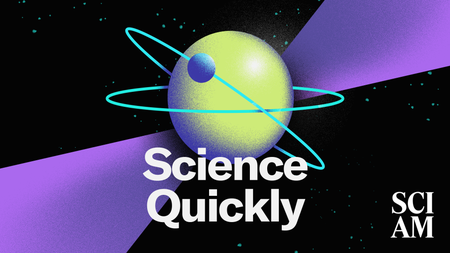
Urgent CDC Data on Influenza and Bird Flu Go Missing as Outbreaks Escalate
Delays in CDC analyses of infectious disease threats and agency silence will harm Americans, doctors and public health experts warn
Amy Maxmen is a public health local editor and correspondent for KFF Health News, covering efforts to prevent disease and improve well-being outside of the medical system.

Urgent CDC Data on Influenza and Bird Flu Go Missing as Outbreaks Escalate
Delays in CDC analyses of infectious disease threats and agency silence will harm Americans, doctors and public health experts warn

Measles Outbreak in Children Grows in One of Texas’ Least Vaccinated Counties
With hospitalizations and at least nine confirmed cases, health officials race to contain a growing outbreak in a community with low vaccination

Mishandled Response to the Bird Flu Leaves U.S. Vulnerable to Outbreak
The U.S. government lost control of the bird flu because of a sluggish response and deference to industry.

How the U.S. Lost Control of Bird Flu, Setting the Stage for Another Pandemic
As the bird flu virus moved into cows and people, sluggish federal action, deference to industry and neglect for worker safety put the country at risk

Bird Flu Cases in People Are Being Undercounted
Dairy workers in Texas show signs of prior, undetected bird flu infections in a new study

The CDC’s Test for Bird Flu Works, but It Has Issues
Flaws in the CDC's H5N1 test highlight the risks of relying on a single test supplier, some experts say

Is It Time for U.S. Farmworkers to Get Bird Flu Shots?
Finland has decided to vaccinate farmworkers against bird flu—and experts say the U.S. should do the same

Lack of Bird Flu Tests Could Hide Pandemic Warning Signs
The FDA has authorized just one type of avian flu test, and it is only available to livestock workers

How Bird Flu Slipped Past High-Tech Texas Dairy Farmers
Detecting bird flu signs in dairy cows sooner could have helped staunch the virus's spread

Rift over N95 Use Puts Health Workers at Risk Again
Critics push back on proposed CDC guidelines that they say leave health care facilities free to cut corners on N95 masks and other measures that protect workers against airborne diseases such as COVID

Are New Omicron Subvariants a Threat? How Scientists are Keeping Watch
In South Africa, a network of researchers are studying whether new lineages BA.4 and BA.5 escape immunity from COVID-19 vaccines and prior infections

New Studies Support Wuhan Market as Pandemic’s Origin Point
The reports’ authors say that the novel coronavirus, or SARS-CoV-2, jumped from animals sold at the market to people twice in late 2019—but some scientists want more definitive evidence

Two Scientists Will Replace U.S. Science Adviser Eric Lander
Celebrated sociologist Alondra Nelson and genome leader Francis Collins will temporarily split Lander’s duties

Hundreds of Scientists Weigh In on a High-Stakes U.S. Abortion Case
Studies suggest that a reversal of the landmark Roe v. Wade decision would be detrimental for many

Scientists Hail Historic Malaria Vaccine Approval—But Point to Challenges Ahead
The WHO-approved RTS,S vaccine has a modest efficacy and requires a complex regimen of doses, so ample funding and clear communication are crucial to success

The COVID Lab-Leak Hypothesis: What Scientists Do and Do Not Know
An examination of the arguments that SARS-CoV-2 escaped from a lab in China and the science behind them

Divisive COVID ‘Lab Leak’ Debate Prompts Dire Warnings from Researchers
Allegations that COVID escaped from a Chinese lab make it harder for nations to collaborate on ending the pandemic—and fuel online bullying—some scientists say

Will COVID Force Public Health to Confront America’s Epic Inequality?
In California’s San Joaquin Valley, some researchers are turning political to address the social determinants of health

In Shocking Move, U.S. Backs Waiving Patents on COVID Vaccines
The development from the Biden administration draws cheers from public health researchers and ire from drugmakers

WHO Report on COVID Pandemic Origins Zeroes In on Animal Markets, Not Labs
Scientists say the conclusions make sense but note that supporters of the lab-leak theory are unlikely to be satisfied

First Openly Transgender Top U.S. Official Is Set to Tackle Inequity
Biden health official Rachel Levine has a strong track record of fighting for social justice in health care, researchers say

Massive Google-Funded COVID Database Will Track Variants and Immunity
Open repository will give free access to more than 160 million data points with details about individual infections

What a Joe Biden Presidency Would Mean For Science
The coronavirus pandemic, climate change and space exploration are among the issues that Biden will influence if he wins the upcoming U.S. election

Why the United States Is Having a Coronavirus Data Crisis
Political meddling, disorganization and years of neglect of public-health data management mean the country is flying blind